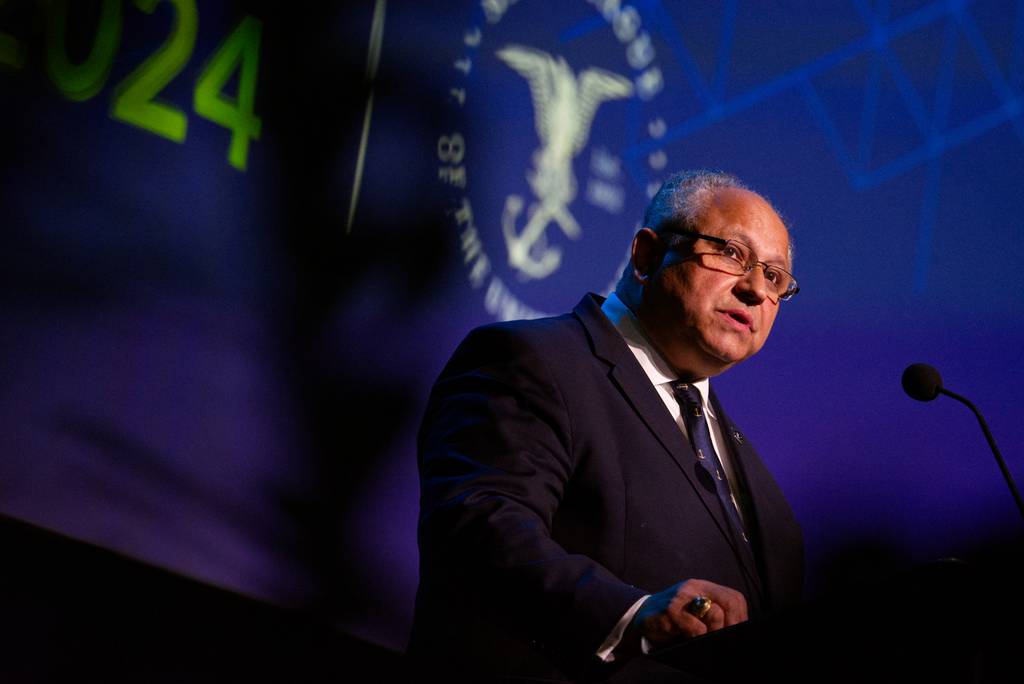
The recent review of shipbuilding progress is an important step in correcting the current cost overruns and schedule slippage. However, the U.S. Navy secretary’s rather timid response of only directing the FFG design team to gather at the shipyard was far too timid.
Many had hoped this program would solve the problem of small, anti-submarine warfare ships, replacing the FFG-7 class. Those hopes were dashed with the announcement of an outrageous, three-year delay. Delivery will be about 10 years after contract award. This ruins the whole concept of adapting a proven foreign design. According to the Navy, the accumulation of design changes results in only 15% commonality with the base ship. Either the source selection picked the wrong ship, or uncontrolled change mania ruined a good design.
The secretary should have given the instruction: “Get the ship schedule and cost back to where it was when the contract was approved. Do not expect any bonuses or promotions until that happens.”
The now-retired FFG-7-class frigate was an important part of the anti-submarine warfare capability. That was supposed to be replaced with littoral combat system’s anti-submarine warfare module. That development failed. The U.S. Navy will have no capability to protect sea lines of communication unless destroyers are diverted from force protection. This is puzzling and dangerous.
The small combatant force has disappeared. It seems that urgency would be applied to the FFG-62 program, but this is obviously not the case. Reasons for a three-year slip are lack of workforce and the need to let other shipyard work, including for littoral combat ships, take priority.
What is the cause of the three-year delay? Based on prior experience, it is likely government-furnished equipment and information. If so, this needs to be corrected.
The fleet plan is to have 73 small surface combatants. Current plans envision frigate procurement averaging 1.5 ships per year. For comparison, production of the FFG-7 class was more than three ships per year using three shipyards.
China is building a large fleet of air-independent submarines, quieter than nuclear submarines and capable of 60-day missions. They are far more capable than any of the German U-boats or U.S. submarines of World War II. They pose a clear threat to any surface ship in the Pacific and Indian oceans.
Then there are recurring maritime security problems that take many forms. There is no need to use destroyers in this role and divert them from force protection roles.
Rather than accepting a three-year delay, the Navy should accelerate the FFG-62 class by making it the top priority for Fincantieri. They are an international shipbuilder producing more complex ships than this frigate. The foreign workforce can get work visas in the shipyard and design activities. Since the design is Italian, there should be no security issues. They should be able to beat the construction period of the large cruise ships they build in Italy. The frigate’s gross tonnage is about 10% of the size of these detailed and exquisite cruise ships, with major outfitting required.
Sources of the delay should be identified and made public, then progress will be clear as it occurs.
Furthermore, competition is the most effective way to control costs, encourage productivity increases and expand industrial capacity. This exists only in the DDG-51 program. A lack of competition encourages contractors to invent the highest cost possible in the cost-negotiation process and forgo productivity improvements. They usually win.
The next step — to be done now — in correcting the current frigate problem should be the establishment of a leader-follower relationship by designating Fincantieri the leader and selecting a second-source follower based upon the second-source competition.
Since the competition has been completed, a third source could be selected to be used if funds become available. This will prepare for efficient production. This is a traditional Navy practice and was applied in the FFG-7, CG-47 and DDG-51 classes. The result was delivery schedule and cost within expectations.
Implementation of the leader follower program would occur by awarding one of the fiscal 2024 ships to the follower yard. The competition for a second source has occurred, but was put on hold. That should be reversed.
Another action to take is to roll back the nice-to-have changes to get back to the ship that was purchased under the contract. This will help eliminate contractor claims and massive legal fights.
These basic steps will assure cost control and on-time delivery, but most importantly help return confidence regarding Navy shipbuilding.
Failure to return the FFG-62 to the expected cost and schedule will further erode confidence in Navy acquisition management. Leadership urgency has been missing. It must be instilled now.
Author: Everett Pyatt
Source: DefenseNews



